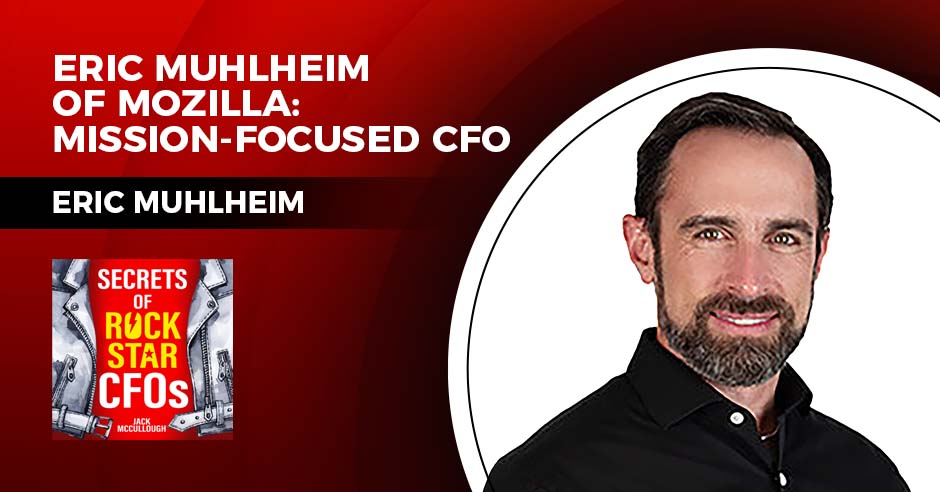Peter Walker has learned some important lessons in his more than 10 years as a CFO. The executive vice president and CFO of Independence, Ohio-based Sterling Check Corp., a global provider of background screening and identity verification services for businesses, helped steer the company through Covid, drove the effort to take it public in 2021 and has played a key role in its global expansion.
He spoke with StrategicCFO360 about why Sterling chose the acquisition route to international growth, how the pandemic changed the best CFOs and the key areas CFOs need to focus on today.
As the CFO of a global company, how have you been able to maintain trust and create deep market expertise while building a global workforce?
The first step is understanding the global addressable market for the products and services your company provides. In our case, more than 50 percent of our multibillion-dollar market is outside the United States. Next, zero in on the countries with the largest revenue opportunity for your business and that meet your risk appetite. Then you need to determine if you enter the new geography via greenfield or acquisition investment. I strongly believe entering new geographies via an acquisition that fits your corporate culture is the best way to expand.
Assuming you locate an attractive acquisition target, the local team and capabilities you acquire will accelerate your understanding of local customer needs, regulations and customs. This is the fastest path to creating and maintaining trust and deep market expertise for your customers.
In our business, this allows us to grow revenue from customers based in the new geography and to provide services to our multinational customers from the new geographies. We operate on a global scale, with significant depth of regional expertise. This allows clients to receive personal and high-touch service and solutions that meet or exceed complex compliance standards across locations or industries.
What is your advice for other CFOs looking to expand their companies globally?
First, ensure the acquirer and the acquired know what success looks like as soon as the acquisition is complete. The acquirer has a deal hypothesis and long-term financial performance model they created to make the acquisition. Share this information with the newly acquired team so everyone is aligned to achieving the same set of goals.
Second, determine your governance model before you close the acquisition and during diligence test the governance model with the newly acquired team. You want to ensure the team is empowered to act locally, but also operate as part of the larger global enterprise.
Third, cross cultural collaboration is critical. Don’t underestimate the time needed upfront to decode how people think, lead and get things done in a new geography.
How has the role as a CFO evolved and what does it take to succeed?
The role of the CFO is ever evolving and that is why I’ve been a CFO for more than 10 years. The buzz phrase pre-pandemic was the CFO needs to be “the strategic partner to the CEO.” Controllership, internal controls, treasury and tax responsibilities are table stakes. The CFO needs to be focused on forward-looking analytics with FP&A, shareholder engagement with investor relations and supply management with procurement.
The expectations of the CFO were then taken to a new level with the pandemic, when best-in-class CFOs were instrumental in changing how businesses operate and enacting permanent cost reductions and structural changes to prepare the business for resilience and recovery. As a result of this change, CFOs continue to expand their responsibilities and impact on their organizations.
A recent study from a top tier consulting firm reported that more than 60 percent of CFOs lead their company’s data and analytics functions, more than 40 percent lead their company’s corporate development and strategy function and more than 30 percent lead their company’s technology function.
What key strategies are essential for CFOs to drive within their companies in addition to managing costs and profitability?
Key areas of focus for the CFO should be: first, partnering with the board and CEO to set and deliver on the company’s long-term strategy. Long-term strategies are often set with three- to five-year achievement metrics. The CFO should always have these metrics top of mind and be proactive in evolving these metrics based on time or industry changes.
Second, driving or supporting the company’s transformation. Since the onset of macro uncertainty in mid-2022, many companies have launched significant transformation efforts to support right sizing in the current environment and to support scale when growth returns.
Third, driving or supporting the company’s evolving risk management efforts. Many of the mega risks, like cybersecurity, are only increasing in frequency and severity. The CFO should be at the forefront of understanding the risks facing the organization and the risk mitigation strategies in place.








